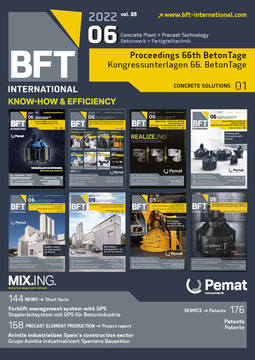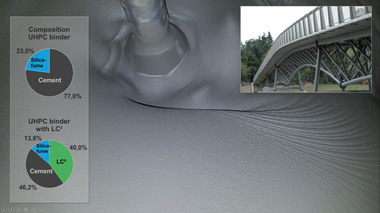New binder as substitute for cement
Concrete is by far the construction material manufactured in the largest quantities worldwide. Its enormous significance in the context of the current sustainability assessment demonstrates clearly that the production of the cement needed for its manufacture is held responsible for approx. 7 % of CO2 emissions worldwide. This fact is not new at all, however: the issues of climate change, resource preservation and sustainability are presently in a strong social and political focus of perception. Further, the role of concrete construction and, accordingly, that also of the concrete block industry, is one that should not remain on the sidelines in this context.
In addition to the development and utilization of increasingly more clinker-efficient cements, much potential is seen for innovative binders such as geopolymers, carbosilicate and calcium hydrosilicate binders. These, however, develop their strength partly on the basis of a reaction principle other than hydration, thus departing from the customary field of experience. Some of these binders have already been known for decades and, with a view to their low impact on the environment – especially the CO2 savings potential – are coming again into the focus of interest in research and practice. Their reliability, however, with regard to efficiency and durability, must still be proven in some cases.
This presentation points out the opportunities as well as the limitations of use of new binders of the kind discussed here, in connection with future CO2 neutral concrete block production.







